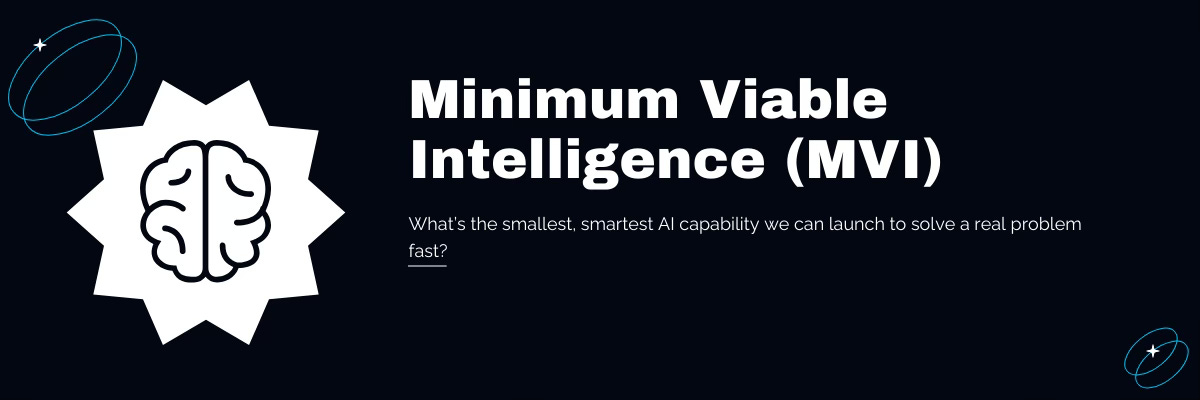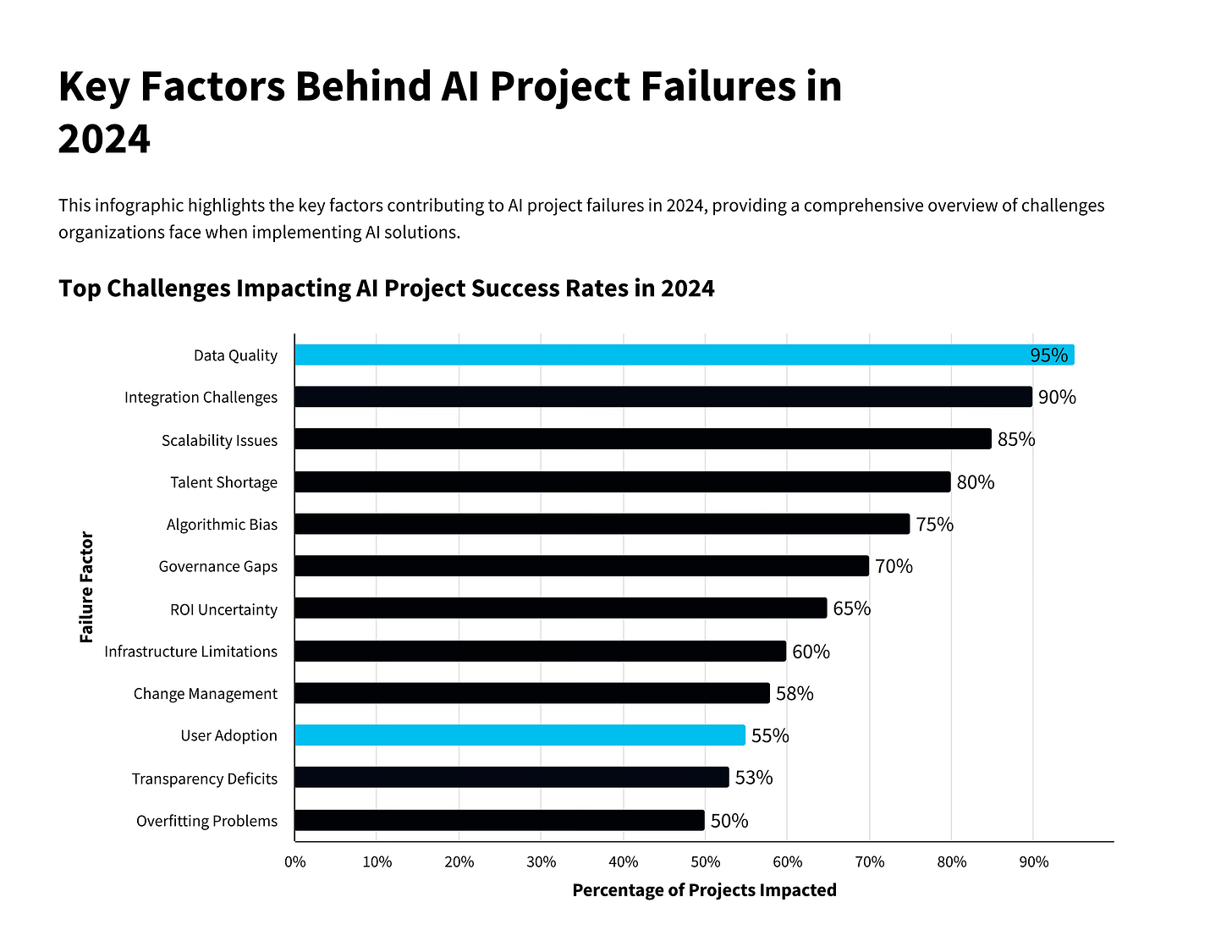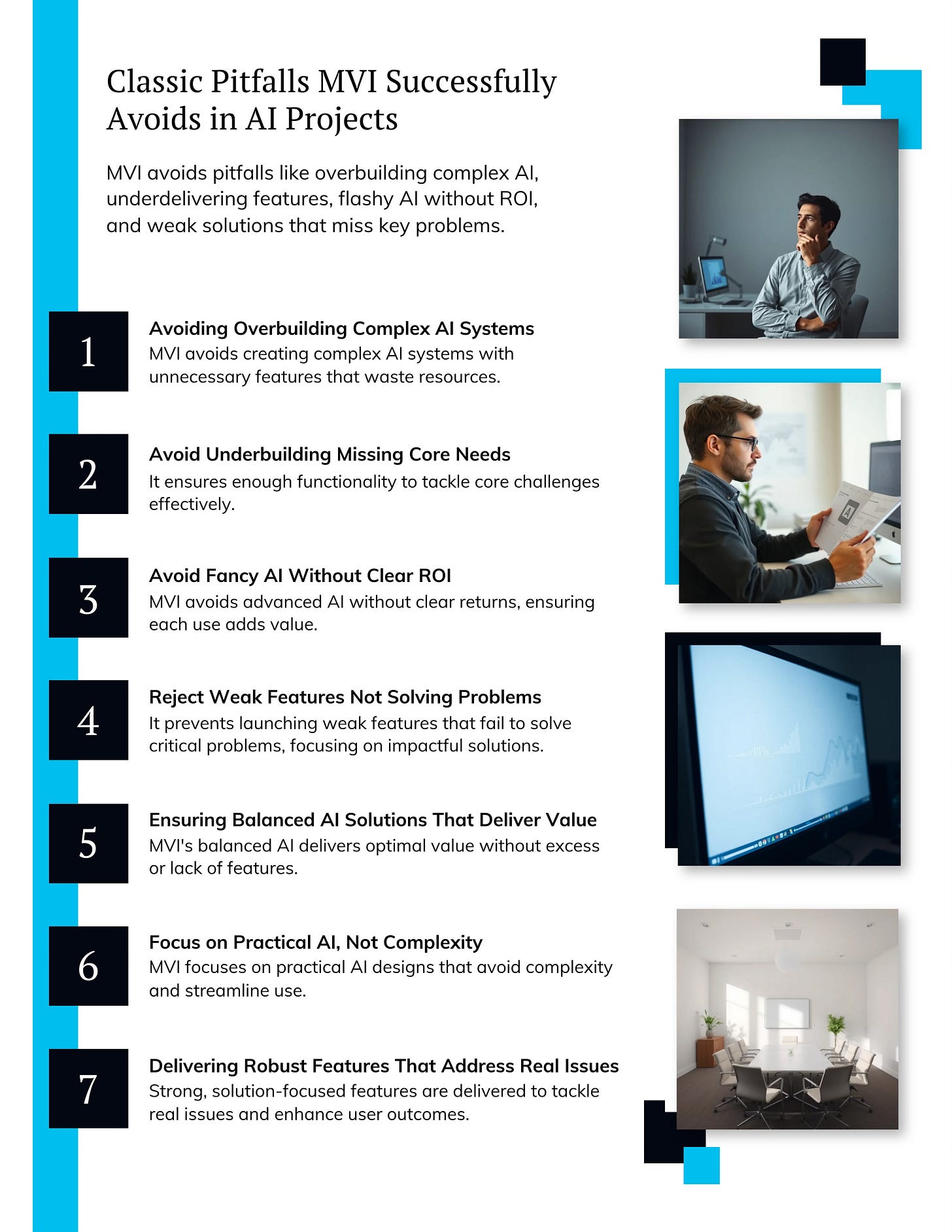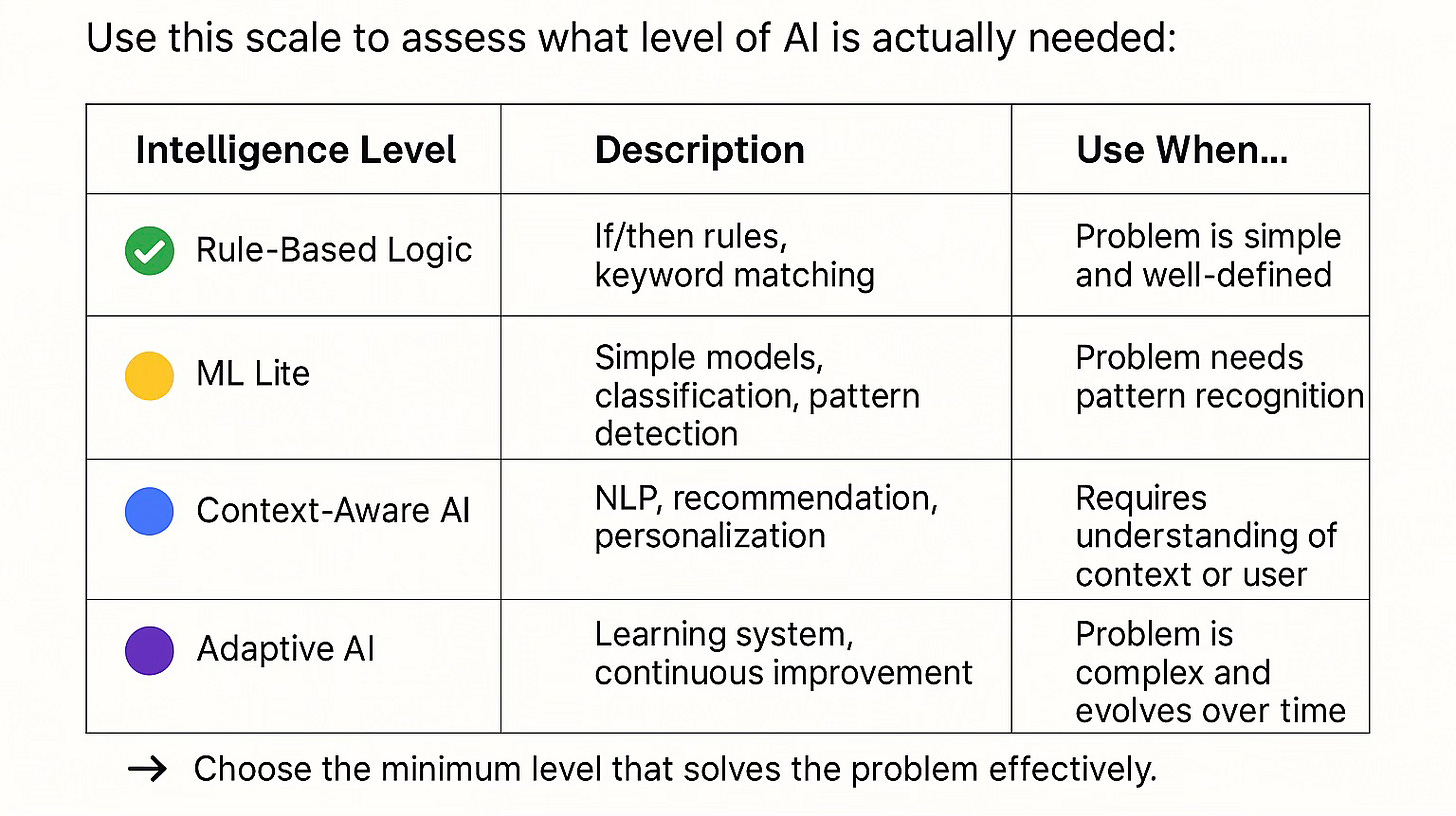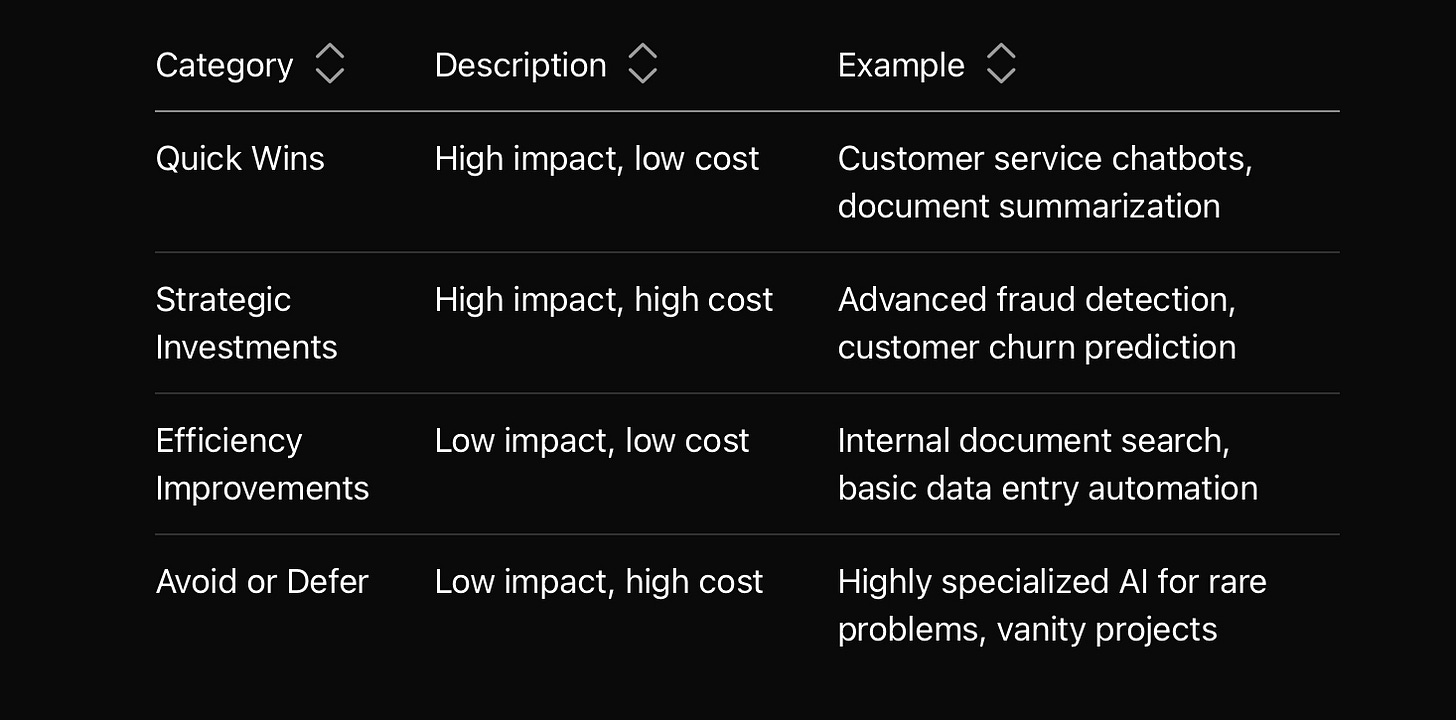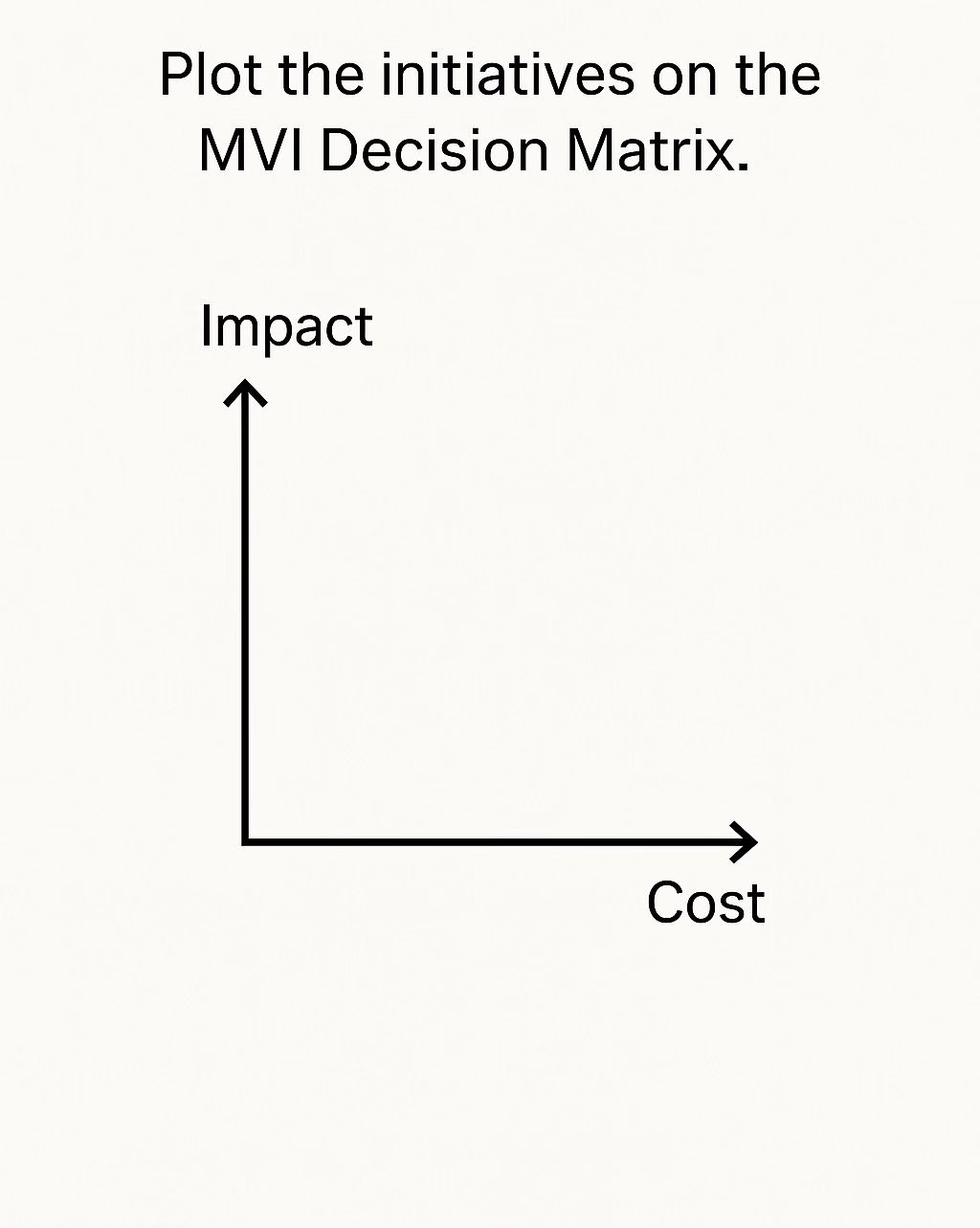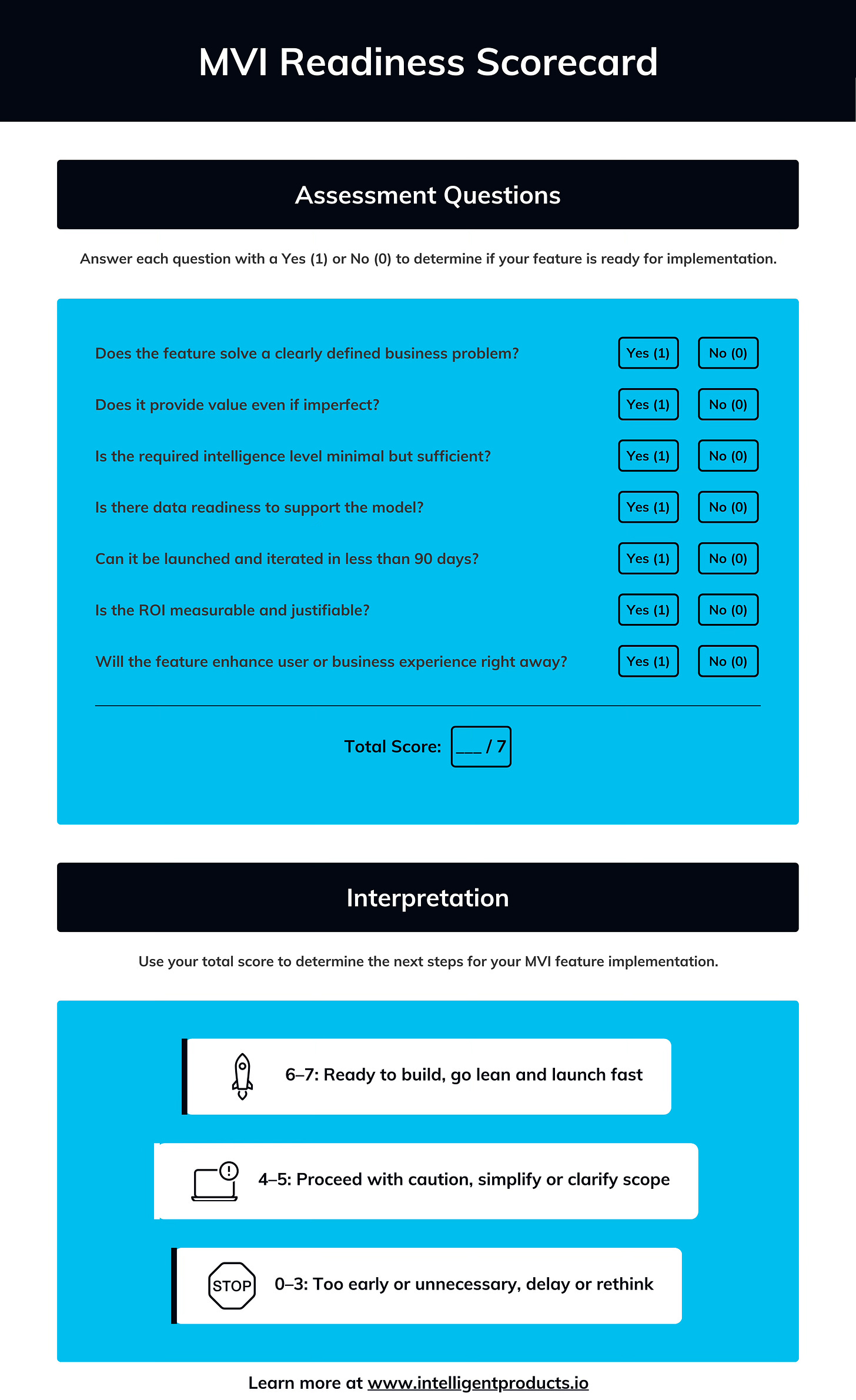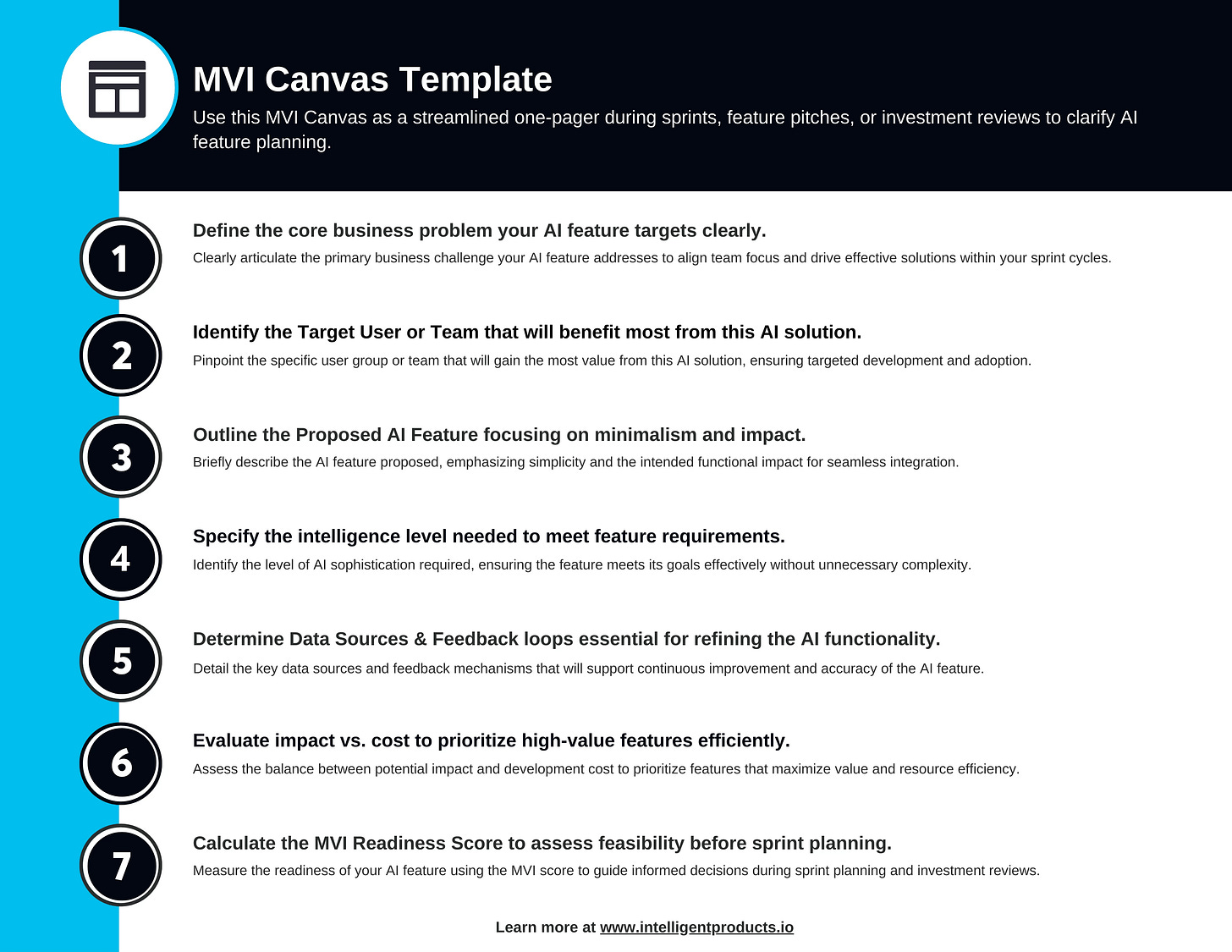⚪️ The Minimum Viable Intelligence (MVI) Framework
How to design intelligent features that deliver value from day one, without waiting for full-blown AI integration.
70% of AI projects still fail to meet expectations. That’s not a prediction, it’s from McKinsey’s 2024 research. The culprits? Over-engineering, misaligned priorities, and teams chasing full-blown “intelligence” before proving even basic value.
Meanwhile, the products people love are winning by doing less. Not less impact. Just less unnecessary ambition.
They start with what works: small, intelligent features that deliver utility. They don’t wait for “perfect AI” to ship. They launch something smart enough and then make it smarter.
That’s where the Minimum Viable Intelligence (MVI) Framework comes in.
Inspired by the MVP (Minimum Viable Product) mindset, MVI asks a simple but powerful question:
What’s the smallest, smartest AI capability we can launch to solve a real problem fast?
In this issue, we dive into the Minimum Viable Intelligence Framework, how to design and ship intelligent features that create real value from day one.
You’ll learn:
What MVI really is
Why it reduces failure rates and boosts ROI
How to spot good MVI candidates in your product
Tactical tools like the MVI Decision Matrix and cheat sheet
Real-world examples from companies that shipped MVI well
This is a mindset shift and a playbook you can apply immediately.
What is MVI.
MVI is not about cutting intelligence short. It’s about starting with just enough intelligence to solve a real problem well and building from there.
The framework emerged as a response to the all-too-common “AI moonshot” trap: teams spend months, sometimes years, building a massive AI system… only to discover no one uses it, trusts it, or even needed it that way.
MVI flips that script. It asks:
What is the smallest, useful, intelligent behavior we can ship?
Can it deliver value even if it’s 70% accurate, not 99%?
Will users benefit from it today and help us improve it tomorrow?
The concept draws from the MVP philosophy but applies it to intelligence: not just what’s the least we can build, but what’s the least intelligence we can deploy to unlock value?
Here’s the core idea:
Minimum Viable Intelligence = The smallest useful layer of intelligence that solves a specific problem at an acceptable cost and complexity.
It doesn’t mean settling. It means shipping early, learning fast, and letting intelligence evolve from real-world use, not from lab assumptions.
“The optimal level of AI needed to solve a business problem at a justifiable cost, no more, no less.”
- Hyacinth.ai, 2025
In fact, a 2025 study by Hyacinth.ai shows:
30% faster time to implementation
25% higher ROI
…when teams use MVI to guide their AI rollouts.
This framework helps you deliver value fast, learn from the real world, and evolve intelligently, without burning resources upfront.
Real-World Example: Swan AI’s Support Bot Reset
In an Hyacinth.ai article I saw recently talked about how a mid-sized e-commerce company used MVI to fix their slow customer service response times with an intelligent chatbot. They started big programming 50+ scenarios, complex logic trees, and multi-turn flows.
Result? The bot failed. It couldn’t handle edge cases. It frustrated users. Escalations spiked. The team burned out.
So they reset.
They asked, “What’s the minimum our bot needs to know to be helpful?”
They picked the top 10 most frequent support questions. Taught the bot to handle just those. Everything else got passed to a human, and importantly the bot learned from each escalation.
The result?
65% drop in response times
$450K in annual savings
40% fewer escalated tickets
Happier customers, fewer complaints
That’s MVI in action: Solve a specific problem with minimal but meaningful intelligence and grow from there.
How to Apply MVI Framework
MVI Evaluation Cheat Sheet
Quickly assess whether your AI feature is right-sized, value-aligned, and ready to deliver.
Use this cheat sheet before building or approving any AI feature.
Step 1: Define the Problem
What business problem are you solving?
Example: “Slow customer response times”
What is the cost of not solving this problem?
Revenue loss, churn, inefficiencies, etc.
Who benefits?
Internal users, customers, execs, etc.
Step 2: Evaluate the Intelligence Level Needed
What’s the minimum intelligent behavior needed to solve this problem?
Would 70% accuracy still provide value?
Will users trust and use the feature now?
Step 3: Assess Cost vs. Impact
Use the MVI Decision Matrix to score or plot your initiative:
💸 Low Cost 💰 High Cost
📈 High Impact ✅ Quick Win. 🌟 Strategic Investment
📉 Low Impact ⚠️ Small Experiment ❌ Avoid
Ask yourself:
Is there a cheaper non-AI alternative?
Is this feature high-impact or just “nice to have”?
Step 4: Evaluate Data Readiness
Do you have labeled, clean, relevant data?
Is the data source stable and available long term?
Do you have access to feedback loops for continuous improvement?
If you answer “no” to any of these, consider delaying or scoping down the AI feature.
Step 5: MVI Readiness Scorecard
Question (Yes/No)
Does the feature solve a clearly defined business problem?
Does it provide value even if imperfect?
Is the required intelligence level minimal but sufficient?
Is there data readiness to support the model?
Can it be launched and iterated in less than 90 days?
Is the ROI measurable and justifiable?
Will the feature enhance user or business experience right away?
Bonus: Your MVI Canvas (One-Pager Template)
Business Problem
Target User/Team
Proposed AI Feature
Intelligence Level Needed
Data Source & Feedback
Impact vs. Cost
MVI Readiness Score
Use this canvas during sprint planning, feature pitches, or investment review meetings.
Pulse Check
What’s one feature in your product that could become smarter with just a small layer of intelligence?
Would you rather ship a “good enough” AI feature now, or wait for 95% accuracy? Why?
One Thought to Leave
“Intelligence isn’t added. It’s grown.”
Start with you MVI and then grow from there
The smartest products rarely launch with full-blown intelligence. They earn it through feedback, iteration, and clear use cases.
For builders, your intelligent products don’t need to be perfect, it just needs to do better in a specific task compare to a human.
Start smart enough. Learn fast. Improve where it counts.

